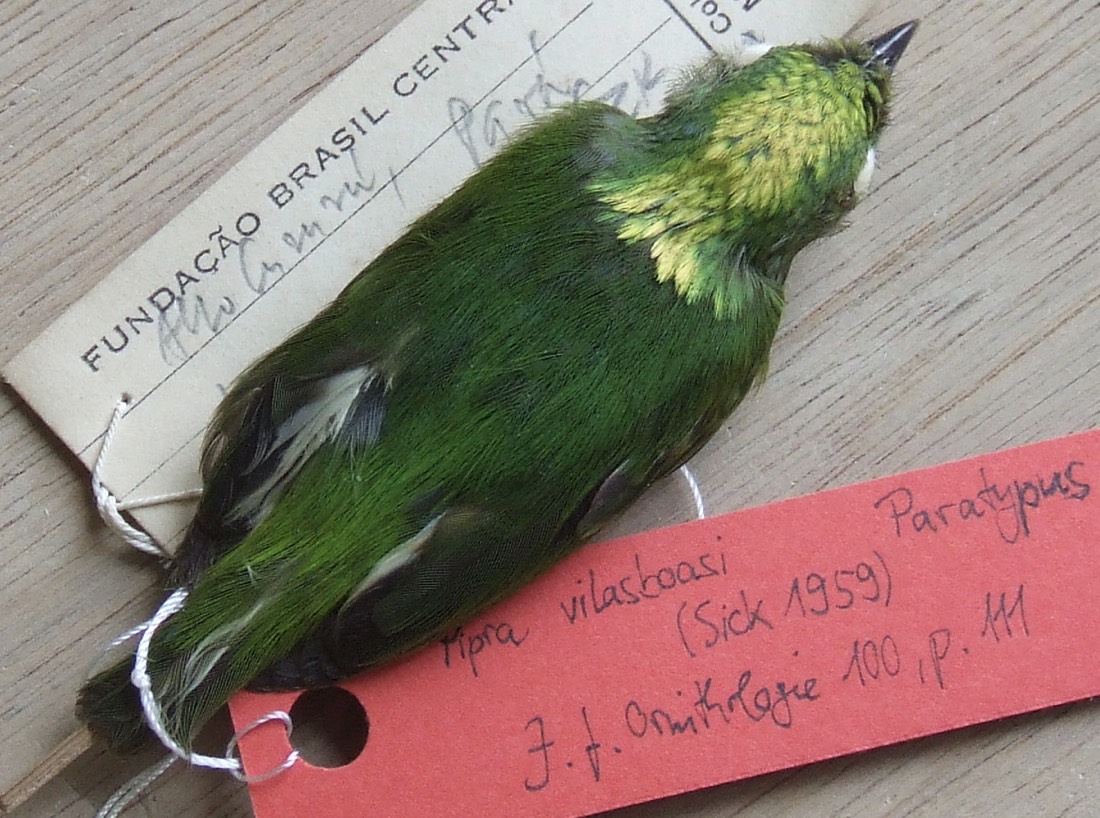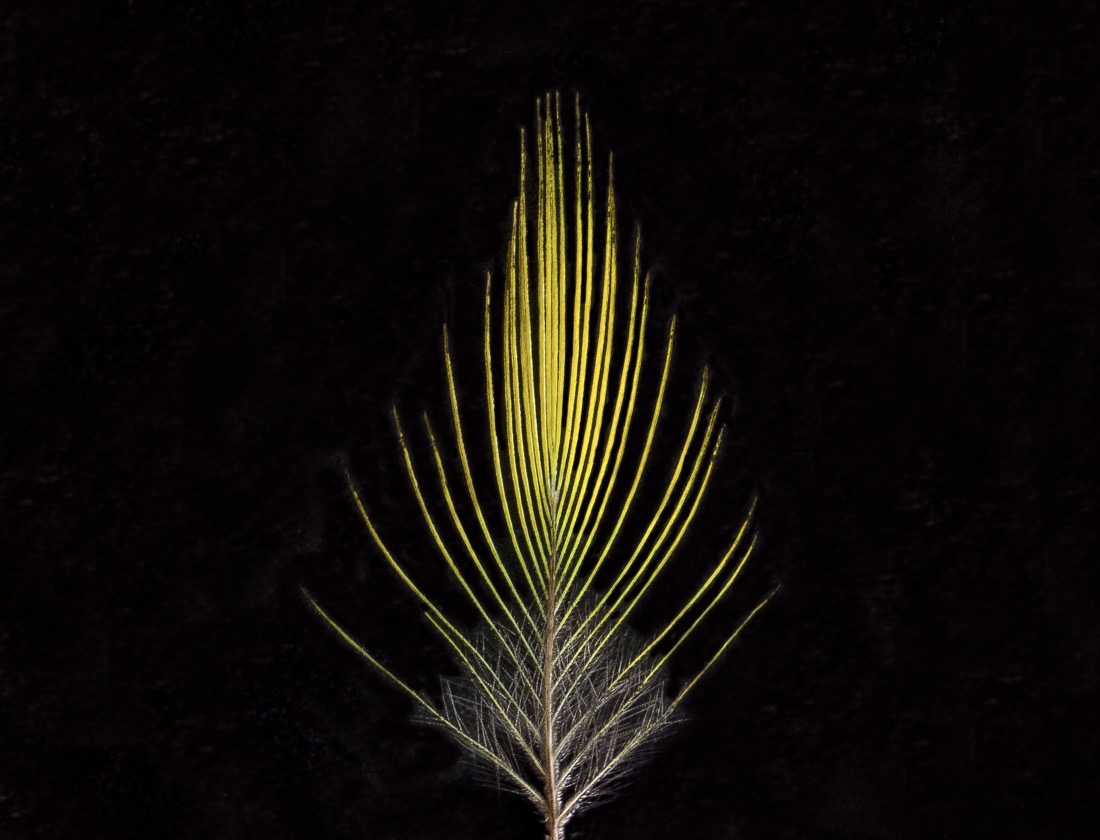Rare Hybrid Bird Discovered in the Amazon in a First

A rare, vivid green bird with radiant yellow head feathers is actually a unique hybrid species that lives in the Amazon rainforest, researchers have found.
The small, golden-crowned manakin was first discovered in Brazil in 1957, but then it was not seen again until its rediscovery 45 years later in 2002. A new study of the bird's origins shows that the golden-crowned manakin is a cross between the snow-capped manakin and the opal-crowned manakin, representing the first hybrid-bird species found to date, according to a statement from the University of Toronto.
"While hybrid plant species are very common, hybrid species among vertebrates are exceedingly rare," Jason Weir, senior author of the study, said in the statement. [In Photos: Amazing Amazon Animal 'Selfies']
Hybridization occurs when two species interbreed to produce a third. While the three related species of manakins all have radiant yellow-green upper bodies with golden undersides, each has distinctively colored feathers on their head.

Although hybridization among vertebrates in the wild is rare, it has been recorded in some animal populations. For example, the red wolf of eastern North America is a possible hybrid between the coyote and grey wolf, Live Science previously reported.
Even rarer, however, is when a hybrid species becomes reproductively isolated and forms a stable population that no longer freely mixes with its parent species. This is what the golden-crowned manakin accomplished: It established its own new species with unique characteristics in a remote area of the south-central Amazon Rainforest, the researchers said. This area is separated from the parent species' habitat by wide rivers that act as natural barriers.
"Without geographic isolation, it's very likely this would never have happened because you don't see the hybrids evolving as separate species in other areas where both parental species meet," Weir said. "This is what makes the golden-crowned manakin such a novel animal."
Sign up for the Live Science daily newsletter now
Get the world’s most fascinating discoveries delivered straight to your inbox.
The researchers collected feather samples and performed genetic tests that revealed that about 20 percent of the golden-crowned manakin's genome came from the snowy-crowned manakin and about 80 percent came from the opal-crowned manakin, according to the study.
Using a technique called coalescent modeling, the researchers were also able to determine that the golden-crowned manakin emerged about 180,000 years ago, when the two parental species originally mated. Furthermore, the researchers found that both parental species diverged from a common ancestor about 300,000 years ago.
"Most Amazon bird species diverged from their most recent relative around 1.5 [million] to 4 million years ago, so these are all young birds by comparison," said Weir, who is an expert on the biodiversity of New World birds.
Colorful keratin
While the snow-capped manakin has bright, snowy-white crown feathers, the opal-crowned manakin has brilliant, iridescent crown feathers. Male birds use these highly reflective colors to attract female mates in the dark interior of the rainforest. Hybrid and parent species generally have similar characteristics, but the golden-crowned manakin somehow evolved with a distinctive golden head that doesn’t resemble the crown feathers of either of its parents. [Real or Fake: 8 Bizarre Hybrid Animals]
To better understand why the golden-crowned manakins have such a strikingly different coloring, the researchers examined the keratin structure of the crown feathers of all three of the bird species. Their analysis showed that the two parent species have very different structural arrangements of keratin that create the snowy-white and brilliant iridescent crown feathers.
As a result of hybridization, golden-crowned manakins have a mix of keratin structures from both parental species. It is believed that the members of the species originally had duller white or grey feathers as a result of their keratin structure and then later evolved yellow feathers to increase their visibility in the forest and attract female mates, the researchers said.
Their findings were published Dec. 26 in the journal Proceedings of the National Academy of Sciences.
Original article published on Live Science.










